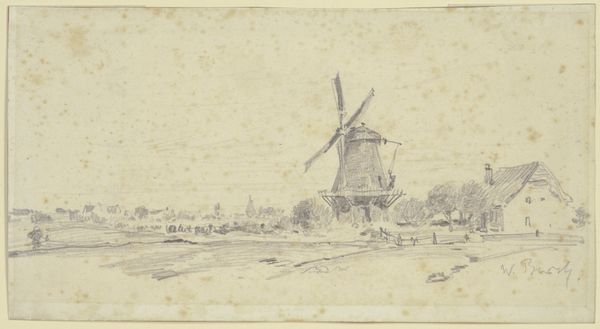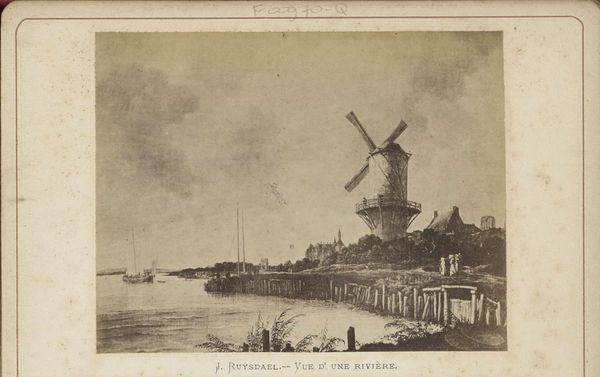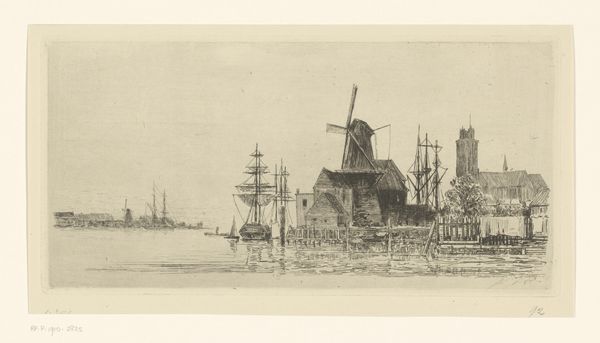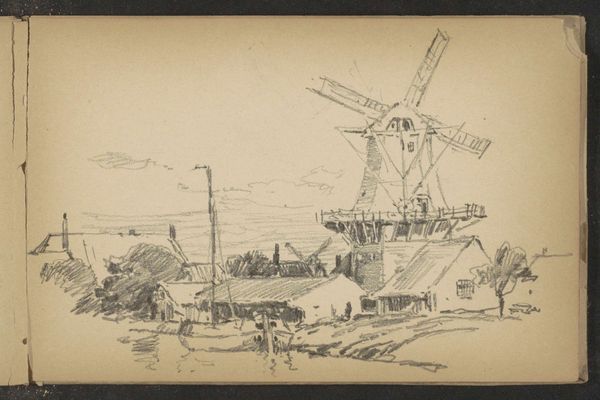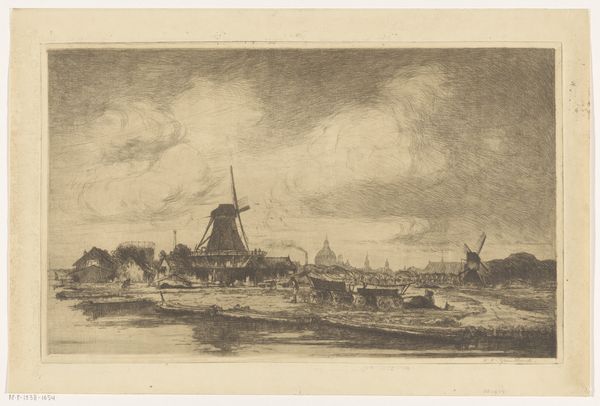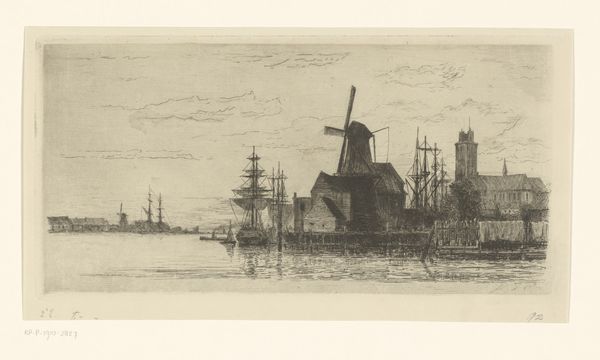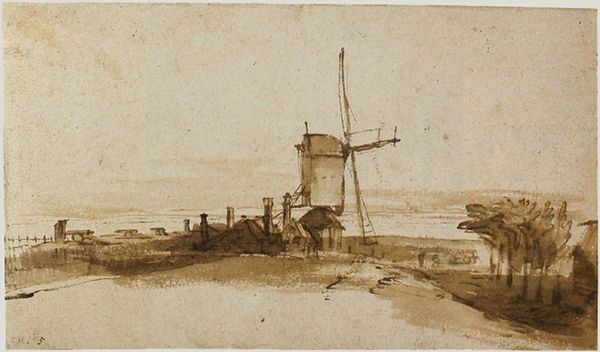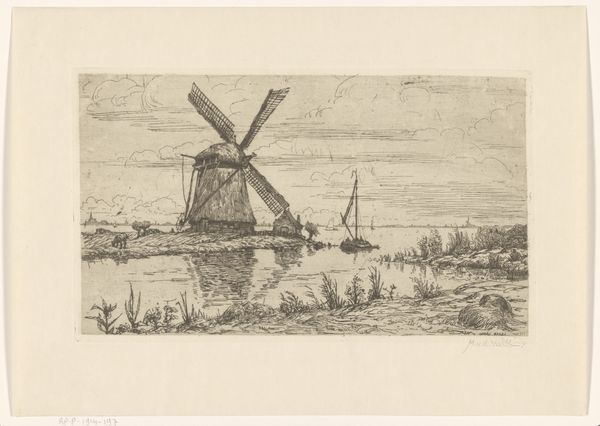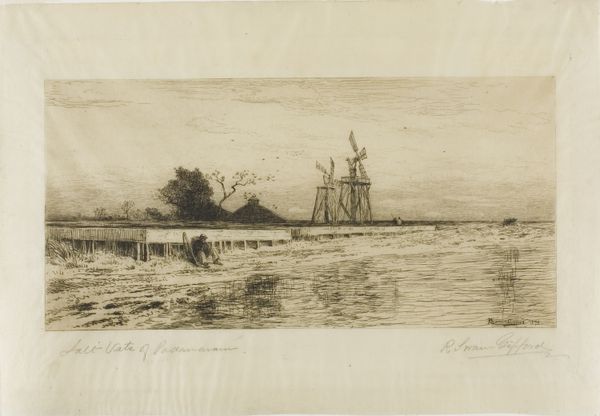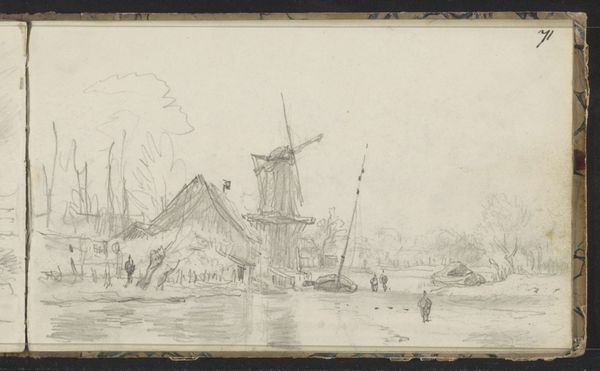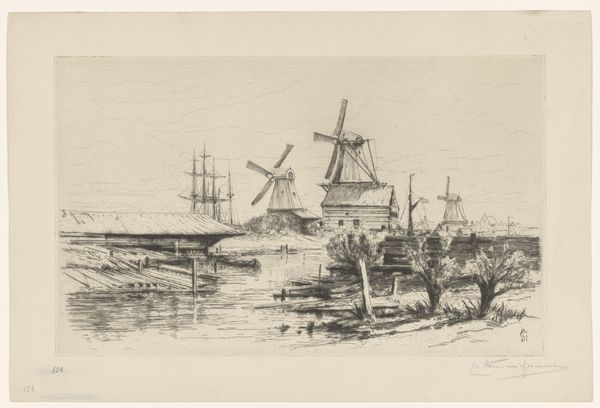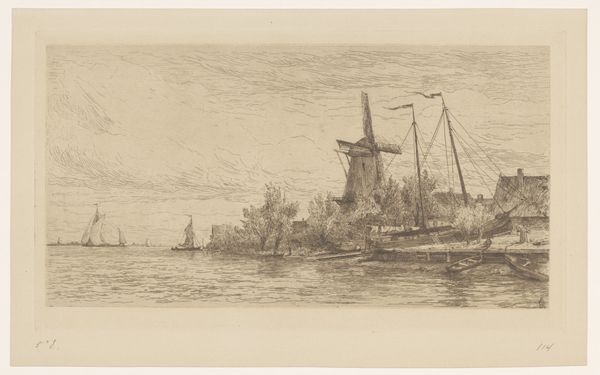
Fotoreproductie van het schilderij 'De molen bij Wijk bij Duurstede' door Jacob Isaacksz. van Ruisdael 1893 - 1912
0:00
0:00
drawing, pencil
#
drawing
#
dutch-golden-age
#
landscape
#
coloured pencil
#
pencil
#
watercolor
Dimensions: height 102 mm, width 129 mm
Copyright: Rijks Museum: Open Domain
Editor: Here we have "Fotoreproductie van het schilderij 'De molen bij Wijk bij Duurstede' door Jacob Isaacksz. van Ruisdael", dating from between 1893 and 1912. It looks like a drawing made with pencil and maybe watercolour, quite subdued. I’m really drawn to how peaceful and idyllic it seems. What do you see in this piece, and what do you think makes it resonate even now? Curator: Beyond the peaceful aesthetic, I see a powerful symbol of Dutch identity intertwined with landscape and labor. The windmill wasn't merely picturesque; it was a vital machine in a land constantly battling the sea. This image, especially in the context of late 19th-century reproduction, invites us to consider how national identity was being constructed and circulated through art at the time. Who had access to this image, and what did it mean to them? The Dutch Golden Age landscapes often served as visual reminders of Dutch power, independence, and prosperity. How might ideas of class and colonialism shape readings of the landscape depicted here? Editor: That's fascinating! I hadn't considered the role of the windmill beyond its practical function. Curator: Exactly! And think about the act of reproducing the image itself. What does it mean to make a drawing of an iconic painting like this, nearly three hundred years later? It's a re-framing, perhaps a longing for a past or a re-evaluation of Dutch heritage in a changing world. How does this drawing, with its delicate lines and muted colors, affect our understanding of the original painting's themes of national pride? Editor: It’s like the artist is almost remembering the painting, softening it with nostalgia, perhaps? Curator: Precisely. These nuanced copies highlight the powerful, continuous influence of images in the creation of social identities and power structures. Editor: That's given me so much to think about. I see it completely differently now. Curator: Excellent. Hopefully, this perspective will deepen your relationship with art history in new ways!
Comments
No comments
Be the first to comment and join the conversation on the ultimate creative platform.
